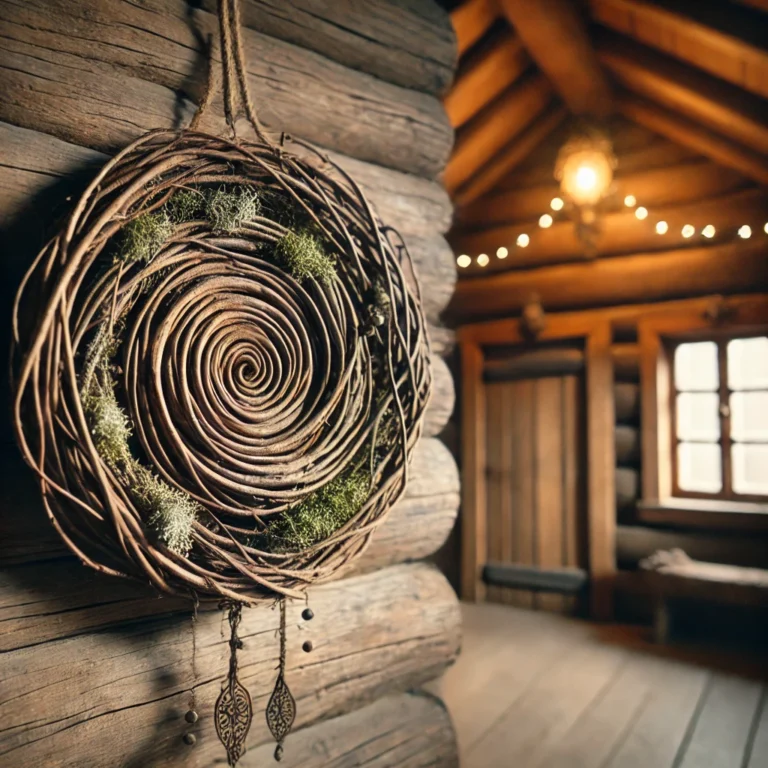Finland’s rich cultural heritage and craftsmanship have shaped the nation’s identity for centuries. One of the most remarkable symbols of this heritage is Käämyäjä, a traditional Finnish decorative piece also known as the Twisted Root. This unique ornament represents the cycle of life and the deep connection between nature and humanity. How to Make the Most of LessInvest
What is Käämyäjä?
Käämyäjä is a traditional Finnish decorative item made from natural materials such as branches, moss, and roots. Its distinctive twisted or knotted form symbolizes the cyclical nature of life and the interconnectedness of all things. More than just an aesthetic piece, it carries a profound cultural and symbolic meaning in Finnish tradition.
The Historical Background of Käämyäjä
The origins of Käämyäjä trace back to ancient Finnish culture, where it served as a talisman of protection and good fortune. It was commonly placed above doorways or in central locations within homes to ward off evil spirits and attract positive energy. This tradition reflects the Finns’ deep-rooted belief in nature’s power to guide and protect.
Materials and Crafting Process
The process of making Käämyäjä requires precision, skill, and patience. Traditionally, the following materials are used:
Branches and twigs: Flexible woods like birch and pine are ideal for forming the base.
Moss: Adds texture and depth to the decoration.
Vines or roots: Used to secure the structure and maintain its shape.
The crafting process involves collecting materials, shaping the base by twisting and weaving branches, reinforcing the structure with vines, and adding moss and other natural elements for the final touch.
The Symbolism of Käämyäjä in Modern Times
While Käämyäjä is no longer seen as a mystical talisman, its symbolism remains relevant in modern Finnish culture. It represents respect for tradition, sustainable craftsmanship, and artistic expression. Many contemporary artisans create Käämyäjä-inspired designs for home decor, blending traditional techniques with modern aesthetics.
Käämyäjä in Art and Design
The intricate design of Käämyäjä has inspired artists and designers alike. Its influence can be seen in Finnish architecture, sculptures, and interior design. The combination of natural elements and geometric patterns creates a harmonious and calming atmosphere, making it a popular choice for decorative installations.
Where to Find or Buy Käämyäjä
If you’re interested in acquiring an authentic Käämyäjä, consider these options:
Local craft markets:
Handmade Käämyäjä pieces can be found in Finnish markets, especially in Helsinki and Lapland.
Online stores:
Platforms like Etsy offer a variety of handcrafted Käämyäjä designs from different artisans.
Cultural shops:
Museums and souvenir stores across Finland often sell Käämyäjä as a representation of Finnish craftsmanship.
DIY: How to Make Your Own Käämyäjä
Creating your own Käämyäjä is a rewarding project that combines creativity and tradition. You’ll need flexible branches, moss, string, and scissors. Shape the branches into the desired twisted or knotted form, secure them with string, and add moss and other natural elements for a unique and personal touch.
Frequently Asked Questions About Käämyäjä
What is Käämyäjä?
Käämyäjä is a traditional Finnish decorative piece made from natural materials, symbolizing the cycle of life and the connection between nature and humanity.
What materials are used to make Käämyäjä?
Traditionally, Käämyäjä is crafted from branches, twigs, moss, and vines or roots.
What does Käämyäjä symbolize?
It represents the cyclical nature of life, renewal, and the interconnectedness of all things. Historically, it was believed to bring protection and good fortune.
Can I make Käämyäjä myself?
Yes! Making Käämyäjä at home is a great way to honor Finnish craftsmanship using simple materials like branches, moss, and string.
Where can I buy Käämyäjä?
Käämyäjä can be purchased at Finnish craft markets, online stores like Etsy, and cultural souvenir shops across Finland.
Conclusion
Käämyäjä is more than just a decoration; it is a significant part of Finnish culture and history. Through it, we gain insight into the beliefs, values, and way of life of Finland’s ancestors. Whether as a traditional or modern interpretation, Käämyäjä continues to thrive in Finnish homes and hearts, symbolizing the cycle of life and the profound bond between humans and nature.

